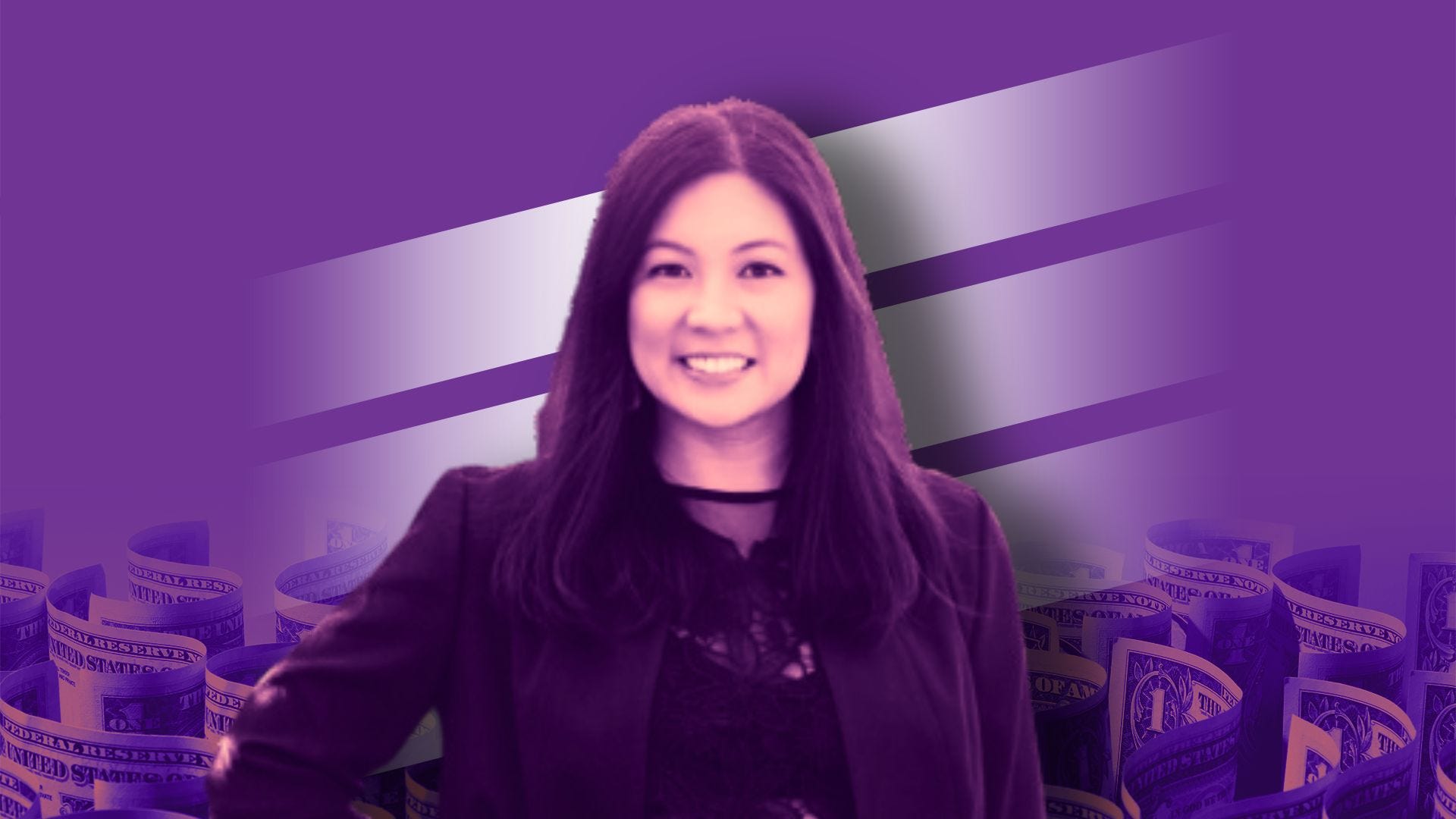Bernadette Joy is a personal finance expert who paid off $300,000 in debt in three years. Image credit: Bernadette Joy/CNET
When paying off debt, standard personal finance advice discourages us from buying anything we don’t need. That’s where I think most of us get it wrong.
Why should we have to give up all the fun and have nothing to look forward to? And who would want to?
When I was focused on knocking out my debt, I considered the “scrimp-and-save” method, which severely restricts spending so you can squeeze a little extra into your budget.
Yet constantly tracking every penny and slapping myself on the wrist when I went over budget didn’t make me want to spend less — it just made me feel worse when I did. Plus, it made me want to spend more, trapping me in a spend-and-restrict cycle. Now that I’m a money coach, I understand why. This approach isn’t sustainable, and it doesn’t address the real problem.
I eventually ditched the classic tips and created my own spending rule. By rewiring the way I think about spending, it’s helped me curtail my spending without giving up things I need (or want) to buy. It also helped me set ambitious financial goals, like saving enough for retirement 30 years ahead of schedule. Now, I share this rule with the thousands of clients I’ve helped wipe out debt and crush their money goals. And I bet it could work for you, too.
Got your attention yet? Here’s my “$1 rule” and how it just might change your life.
What is the $1 rule?
The $1 rule is my spin on the age-old cost-per-use idea, specifically calling out a dollar as the benchmark. Before buying an item, figure out how many times you’ll use it. If it breaks down to $1 or less per use, I give myself the green light to buy it.
So, if an item costs $100 and you’ll only get five uses out of it, that breaks down to $20 per use. Following the $1 rule, that purchase wouldn’t be worth it.
This rule works especially well when applied to your weak spots, where you tend to binge. For me, that’s clothing, accessories and home goods. I still buy things that I love (and will get plenty of use out of), but it stops me from making impulse purchases that might seem like a good deal.
It also encourages me to choose sustainable and high-quality items. I’ve moved almost entirely away from fast fashion because even a $5 shirt I might only wear once or twice breaks the $1 rule.

Growing up in New York, I fell in love with sneakers. But sneakers aren’t cheap, so I’m always on the lookout for discounts. Recently, I found a pair of pink and black Nike dunks for $50 on sale.
So, I crunched the numbers. I calculated that I would probably wear them once a week for a year, or at least 52 times. That means it would cost me around $0.96 for each use. So I got them.
Formula: $50 divided by 52 uses = $0.96 per use.
During the same shopping trip, I found a beautiful fluffy skirt on clearance, marked down from $150 to $37.50. While I was lured in by the big discount and brand name, I let the $1 rule guide me.
I considered the number of special occasions where I might show off this skirt, and I just couldn’t see myself wearing it 37 times. So, I decided it wasn’t worth the money.
Applying the $1 rule to big purchases
When debating major expenses, like furniture or technology, price tags look different when you calculate how many uses you’ll get out of them first.
For example, when we bought our last home, it became clear that my old HGTV-obsessed self was making a comeback. It’s easy to get swept up in the excitement of decorating a new home that you buy more than you really need. But what’s actually worth the money?
With my husband and I working from home permanently, we decided we were willing to pay a little more for quality desks and office chairs. We learned from previous moves that cheaper desks tend to fall apart easily. So instead of going to Target or getting a desk from Craigslist like we’d done before, we went to a higher-quality furniture outlet.
We found a classic desk that retails for $699, marked down 40% to $419. That’s more than I’ve ever spent on a desk, but using the $1 rule, I realized I would sit in front of it five days a week for 50 weeks a year, which is 250 uses per year. The purchase would pass the $1 rule in less than two years.
I felt much more confident in that purchase than I did in the days I used to scrimp and save every penny.
The $1 rule doesn’t give you permission to spend money that’s not in your budget. You still need to pay attention to how much flexible income you have. But using this rule to curate the purchases you make with your discretionary income can help you put an end to overspending, without feeling restricted.
What if something doesn’t pass the $1 rule?
I still spend occasionally without following the $1 rule. When it comes to paying for events or travel, the $1 rule doesn’t always work. But that’s when I lean on my budget and past experiences to help me decide if an expense is worthwhile.
The Broadway show Hamilton came to our city when I was focused on paying off my student loans and mortgage. The musical theater geek in me was conflicted with the voices of prominent debt experts saying that buying these expensive tickets would be a mistake. But since I stick to the $1 rule for 99% of my purchases, I knew I could make an exception.
Yes, I bought the Hamilton tickets instead of putting extra money toward my debt, and I have no regrets. But I also didn’t use credit to finance the purchase. Instead, I swapped other expenses I would have made during the month, like dining out and social gatherings, so I could pay for the tickets in full without a credit card and without blowing my budget.
The $1 rule won’t always be able to help you when deciding if an experience, such as a vacation or concert, is worth the money. But if you stick to it most of the time for material purchases, you’ll be able to free up more money for experiences, without hurting your debt payoff goals.
You can pay off debt and still live your life
Leaving room to enjoy my money has kept me focused on the long and often monotonous journey of paying off debt and saving for the future. At the same time, I’m removing the guilt of spending on things that are meaningful to me, which has helped me build a healthier relationship with money.
Recommended Articles
Balancing Splurging and Spending Is Hard. I’m an Accountant, Here’s My Advice
Balancing Splurging and Spending Is Hard. I’m an Accountant, Here’s My Advice
Is Doom Spending Hurting Your Finances and Well-Being? Here’s How to Put an End to It
Is Doom Spending Hurting Your Finances and Well-Being? Here’s How to Put an End to It
6 Female Finance Influencers Changing the Way We Think About Money
6 Female Finance Influencers Changing the Way We Think About Money
The $1 Rule Helps Me Save Money Without Sacrificing Everything I Love




